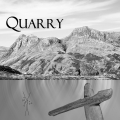Sun of Suns 3) The Setting
Virga is a manufactured environment - did you find it intriguing? Feasible? Did the idea of a zero-gee world where gravity can only be generated by rotation make sense? What about the secondary aspects like localised suns, globules of water, sargassos etc? What about human adaptation to zero-gee?

 Help offset server costs by donating. This is totally optional. Any overages will go to library fines or new books.
Help offset server costs by donating. This is totally optional. Any overages will go to library fines or new books.

Comments
It all made sense. It was nice and scientifically taut. It's like a sort of steampunk/dieselpunk riff on Niven's Smoke Ring, which is very familiar to me, being the basis of one of my games. Humans adapted to zero gee the way astronauts adapt if they are out there long enough, by shedding excess skeletal calcium and muscle mass, and the children born in zero gee get all spidery and long. That's a one way adaptation there!
I almost read Smoke Ring years ago while I was having a Niven fest but never got round to it... perhaps I should look it up again!
I haven't read The Integral Trees or The Smoke Ring, but aspects of this setting sure did remind me of the cover of The Smoke Ring.
I found the setting to be quite intriguing, but not really all that convincing, and not nearly as well drawn as I would have liked. I had an expectation here for a hard SF setting which was set by the Vernor Vinge ensorsement on the back cover, which compares this to Hal Clement's Mission of Gravity and Robert Forward's Dragon's Egg. Vinge says "The longer one ponders Sun of Suns, the less paradoxical - and the more intricately sensible - it comes to be." I sure didn't find that the case.
For one thing, for a supposedly hard SF novel, the setting is very lightly drawn. The front cover flap tells us the world is a 'fullerine balloon' (which words do not ever come up in the text itself, that I can recall). In fact, it's not until page 80 that we start to get some description of the nature of the world from Aubri, who is an outsider and knows the bigger picture. So I assume a 'fullerine ballon' is a real theoretical construct, and I can take that a face value that this kind of world might one day exist. A weightless, airy place with captured floating asteroids inside and plant sargassos and small suns? Ok, that's cool. But this is supposedly a hard SF novel, so how does this all work? No doubt the author has some clever explanations. But these explanations ended up being 'sir not appearing in this film'. Maybe this gets developed more in future books, but I just found the hard never arrived.
For example: this is a book about air-ships (and like the 4th one I've read in the last 2 years) but the ships themselves are never really described. We got a much better explanation for air ships in the other air-ship novel we tackled. These ships (which are described as sailing through the clouds at one point, even though they don't sail) are mostly described as tubes with pointed ends. They have some kind of jet propulsion (what is the fuel? Who knows? I don't recall any mention of it) and engine nacelles, which I suppose gives these ships a kind of classic 'rocket ship' appearance (as opposed to an ST Enterprise appearance).
The ships seem to be made of wood, They have sails, but only for slowing down. Where, in this gravity-less world with barely enough sunlight and seeming no, or very little soil, will trees ever grow tall and straight enough to make wood for ships? Who knows. I'm not at all satisfied the needed wood can be harvested from these sargassos, which I see as being more like mangrove clusters, all interlocking roots and branches growing more horizontally than up in a tangled mess. No planks to be found there.
Also, the plants go 'autumnal' and turn red if they stray too far from their sun... do they even have seasons in this world? Seem unlikely. So how would they know what 'autumn' was. Also, this suggests that the plants are locally adapted to go dormant, meaning they are deciduous and not evergreen. This is fine, but considering the plants form such an important part of the setting/story, I would have liked to have more thought or explanation put into them.
The interiors are lit by kerosene lamps - a hydrocarbon. Where do hydrocarbons come from? Certainly not from deposits pressed under the earth. Where are the refineries. Where does the metal to make the lamps (and the refineries) come from? There are flares and rockets (needing gunpowder?) and bikes which I guess are more like jet-skis (though I don't recall wings being mentioned for steering? - maybe they were). They use speaking tubes instead of wires for their intercoms. Why? And yet they can make their own fusion suns.
So, all in all, I was not convinced by the whole tech-environment-culture development of the place. Too much was unexplained and just didn't really make a lot of sense to me. I'm not saying these things CAN'T be explained - I was just surprised that they weren't, given the whole 'this is a hard SF novel' attribution. This is really the one thing that dissatisfied me about the book, which I otherwise rather liked. But setting is such an important aspect of why I like reading SF&F that it's a biggie.
Reading the above I remember these thoughts when I was reading, but I had forgotten about them by the time I wrote my impressions at the top. I agree with your assessment here, @Apocryphal - Yes, I can see how all these things could exist, but not all together like this. Kerosene is a big one. I caught that and it bothered me in reading. Metal I assume comes from nickel-iron asteroids. Gunpowder is organic. but why speaking tubes when they must have electronics to run their suns. I think a lot of it was done for feel, to give an ersatz steampunk/dieselpunk vibe to it. And why kerosene jets when fans or propellers would be simpler, and more economical and efficient at the speeds they are traveling (IIRC 80 mph is considered fast...) There are elements I like - the rotating towns, for instance - but the whole thing doesn't gel. Luckily the other elements of the books worked much better for me, and looking back I forgot the lumps in this gravy.
I agree with the sentiment here. It was a setting that was trying too hard to mesh the hard SF ideas with the "cool vibes" approach of doing dieselpunk. If you compare this setting with some of the bizarre habitats dreamed up by Iain Banks, you'll get an idea of just how short this setting game.
I'd have preferred it if the setting didn't try to straddle two stools. Either have a worked-through hard SF setting, or say "dieselpunk" loudly and wave your hands a lot. But don't try to do both.
I was thinking a bit about this while out for a walk today, like you do, and - just playing devil's advocate here for a bit - had some thoughts about these points...
The ancient Egyptians had a similar problem - unless they could import "proper" trees from the Levant, which could only happen at specific points in their history, they were starved of wood of any great length. But they managed to make wooden artefacts by developing a lot of skill at joining and splicing small pieces. Maybe the Virga cultures could do something similar?
"Seasons" could be triggered by variations in day length rather than changes in an elliptical orbit - lots of the plant and animal world respond not so mu,ch to temperature cues as to day-length ones. It's (surely) well within the bounds of possibility that the Virga designers would have built in such variations, rather than having every day (=light period) the same length.
You could do quite a cool scarcity / eco plot by proposing that the Virga builders included a certain volume of hydrocarbons distributed through the space - presumably large bubbles of it, optionally surrounded by a hard casing that has to be drilled through. In that case, once it's gone its gone, Is kerosene a resource that different polities would fight over? Stockpile? Ration their inhabitants? Reserve for military use? Would there be a black market? Now I agree that none of this was explored in the book, but then we're only just (as readers) starting to learn that Virga was artificially constructed, and we don't yet know why such an endeavour was thought to be a good idea. Is it a kind of sociological experiment? Or a refuge roughly analogous to a national park? Or is the plot really a kind of Lord of the Flies scenario where the occupants have turned to rivalry and infighting, rather than a cooperative existence?
All this is making me more inclined to read later volumes in the series to find out if any of that is anywher enear the mark...
Joining small pieces into larger wholes is known as scarfing IIRC. The British used this technique to make masts for their sailing ships when they lost access to American forests. My dad used this scarfing technique - basically fitting pieces together with interlocking bevels and glue - to make single piece items out of dissimilar wood.
No - I always work out the details of my game settings so I understand how everything works, then abstract it in-game. GMs and players don't need this information to play the game, so we don't put it in. We publish a lot of this stuff in our a-periodical Magazines, but later on, when we collect a bunch of related articles - like 'What is Active Plasteel and how does it work?' or 'How is time measured in StarCluster?' or 'How does Jump Drive actually work?' Albert Bailey and I write these articles and send them to each other and work it all out as we go.
Kind of like an iceberg - lots more is never explicitly seen than exists. But I totally agree that right now I am speculating that this back-story stuff may have been in Karl Schroeder's mind, and for whatever reason not put down on paper. Kind of "show don't tell" taken very seriously.
Here is an example from Magazine 4, an article called A Look At Scan.
https://drive.google.com/file/d/1XpxNO_9Hn9GAx6AwjNXXt5yJD7okYsot/view?usp=sharing
You can see that we go into great detail when we design components of the setting because we are technical people - Albert was a plasma physicist and I was a technical writer and illustrator who wrote customer facing user guides for scientific instrumentation, working regularly with physicists and engineers, before we retired. It is not necessary that the GM and players of the game know this. All they need to know is Scan tells you what's out there with a roll. Most people would be intimidated if not confused by too much information, but we want to know how it all works so we can model the game interface accordingly.
I wasn't trying to say this was common, but it obviously does exist in some cases.
It would be interesting to to see if at least some of these points get addressed in later ones - I'm thinking maybe there's a parallel with Larry Niven and the alterations he made to the Ringworld as a result of reader feedback and analysis, such as its orbital instability.
Ha! Yes! Niven was great about stuff like that!